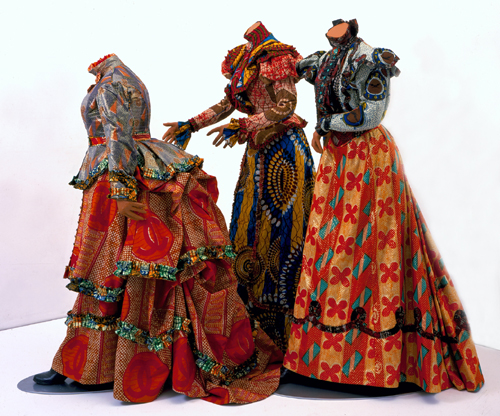Back Cover: Eugenia Yu, "Tie Dress" from Father Collection
In thinking of clothes as passing fashions, we repeat less than half-truth. Bodies come and go; the clothes which have received those bodies survive. They circulate though secondhand shops, through rummage sales, through the Salvation Army; or they are transmitted from parent to child, from sister to sister, from brother to brother, from sister to brother, from lover to lover, from friend to friend. (Peter Stallybrass, “Worn Worlds: Clothes, Mourning, and the Life of Things” The Yale Review 1993 vol. 81. no. 2, pp. 35-50)
The idea of dedicating an issue of Fashion Projects to the topic of fashion and memory started while reading Peter Stallybrass’s “Worn Worlds: Clothes, Mourning, and the Life of Things,” an engaging and lyrical essay on the author’s remembrance of his late colleague Allon White through the garments White wore.
Stallybrass’s piece elucidates people’s intimate relations with clothes—i.e. their materiality, their smell and creases—and the inextricable relations between clothes and memory. It traces the way in which clothes retain "the history of our bodies." Wearing White’s jacket at a conference, the author describes the way clothes are able to trigger strong and vivid memories: "He was there in the wrinkles of the elbows, wrinkles that in the technical jargon of sewing are called 'memory'; he was there in the stains at the very bottom of the jacket; he was there in the smell of the armpits."
My interest in the topic was then piqued while sitting in on a class on fashion curation taught by Alistair O’ Neil at the London College of Fashion, where a number of students curated a fashion exhibition comprised of used gowns and top hats, their main value resting not in their design or historical relevance to fashion in history, but in their being second (or maybe third or fourth) hand, thus retaining intricate yet irretrievable history in their signs or wear, their stains, their scents. This lyrical exhibition, titled "A Walk in the Wardrobe" and staged in an old and seemingly abandoned space, was a reminder of the importance of reconnecting with the materiality of cloth and clothes.
This issue’s focus on clothes and memory dovetails with attempts to promote sustainability within the fashion industry. It invokes a counter-tendency in contemporary fashion which reinstates the importance of materiality and emotional connections to our garments in the hope to slow down the accelerated cycles of consumption and discard promoted by current fashion models. As Stallybrass points out, moments of emotional connections with clothes and cloth become, in fact, rare in the accelerated rhythm of contemporary societies: "I think this is because, for all our talk of the 'materialism' of modern life, attention to material is precisely what is absent. Surrounded by an extraordinary abundance of materials, their value is to be endlessly devalued and replaced."
The various contributors to Fashion Projects explore this theme in disparate ways. Sarah Scaturro, textile conservator of the Cooper-Hewitt, National Design Museum, revisits, together with photographer Keith Price, the museum’s textile collection and her intimate relation with it. She also discusses curatorial practices with Judith Clark, whose exhibition “Malign Muses: When Fashion Turns Back”—based on Caroline Evans’s theories—is an exploration of the complex temporalities of fashion. Tamsen Schwartzman interviews Tanya Marcuse on her photographic work in fashion archives, while fashion designer Shelly Fox discusses her own design and textiles practice. Erica Weiner recounts her use of other people’s memories via old photographs and human hair for the making of her jewelry, while fledgling designer Eugenia Yu tells Erin Lindstrom of her collections based on her family memories. Finally, Lisa Santandrea revisits North America’s industrial past and obsolete technologies, as they remain embodied in knits produced by the now-defunct Ohio Knitting Mills.















